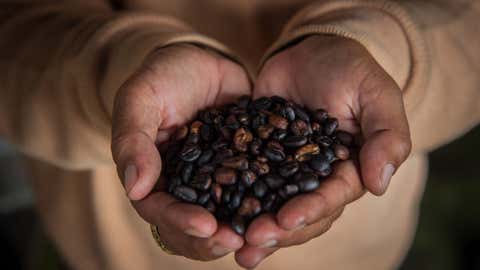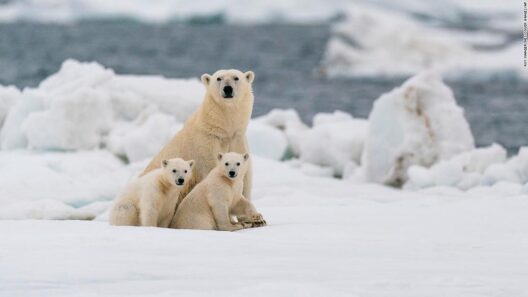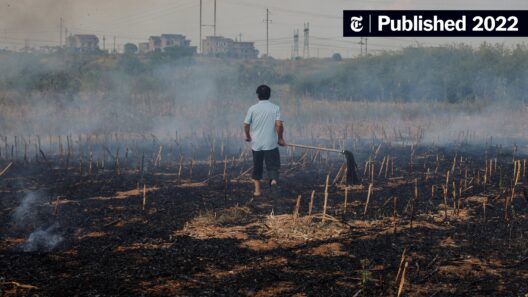As the world swelters under the pressures of climate change, an unassuming beverage beloved by millions—coffee—finds itself caught in a precarious predicament. With roots in the fertile highlands of Ethiopia and a journey that spans continents, coffee is more than just a morning ritual; it is an intricate tapestry woven into the fabric of cultures worldwide. However, this cherished crop is facing an existential threat, one that could irrevocably alter its availability and quality. The rising temperatures, erratic weather patterns, and increasing instances of drought and disease associated with global warming render coffee cultivation a daunting challenge.
Imagine coffee beans as delicate flowers, blooming in their niche under the tropical sun, thriving in the cool embrace of optimal climates. These beans flourish in specific altitudinal ranges, typically between 2,000 to 6,000 feet above sea level, where the balance of temperature and humidity creates an ideal environment. However, as temperatures rise and weather becomes increasingly volatile, this once-reliable haven is transforming into a hostile space. The metaphorical garden that offers us our daily brew is wilting, invoking an urgent need to confront these challenges that are escalating at an alarming pace.
To comprehensively understand the implications of climate change on coffee, one must first consider the intricate biological needs of the coffee plant. The Arabica variety, which constitutes about 60-70% of global coffee production, is especially sensitive to temperature fluctuations. Optimal growth conditions for Arabica are being disrupted, with studies indicating that a rise of just 1.5 degrees Celsius could render over half of existing coffee-growing regions unsuitable by the mid-21st century. As if a benevolent guardian of the earth’s crystalline structures has been unraveled, the delicate balance of ecosystems is thrown into chaos, creating an ominous ripple effect across agricultural landscapes.
Furthermore, coffee is not merely at the mercy of heat; it is also besieged by the consequences of changing precipitation patterns. Areas once blessed with consistent rainfall may face severe droughts, while others may be inundated with excess water, leading to root rot and disease proliferation. This duality of extremes is reminiscent of a perilous tightrope walk; farmers, who have been stewards of this delicate crop for generations, are now navigating treacherous heights without a safety net. The increased incidence of pests and diseases, such as the notorious coffee borer beetle and leaf rust, further exacerbates the vulnerability of coffee crops, wreaking havoc on yields and quality.
The socioeconomic implications of these agricultural shifts cannot be overstated. Coffee is not just a commodity; it is an economic lifeline for millions of farmers worldwide, particularly in developing nations where agricultural exports constitute a significant portion of national income. The specter of shrinking harvests threatens to undermine livelihoods, spiral families into poverty, and displace traditional farming communities. It is a jolting reality that reverberates across local and global economies.
The predictions are sobering: as temperatures continue to rise, coffee cultivation may shift to higher altitudes, potentially leading to geopolitical tensions as nations vie for diminishing arable land. Moreover, the loss of biodiversity in coffee cultivation areas can resonate through entire ecosystems, threatening the myriad species that depend on these habitats. The cascading effects of these losses extend far beyond mere coffee production; they interlace with broader environmental degradation and loss of natural resources.
In response to this existential crisis, innovative strategies emerge as beacons of hope. Sustainable farming practices, such as shade-grown coffee, not only enhance the resilience of coffee plants against climatic stressors but also nurture biodiversity. By planting coffee under a canopy of trees, farmers can create microenvironments that buffer against temperature extremes, while simultaneously fostering habitats for wildlife. Agroforestry initiatives represent a symbiotic relationship between agriculture and conservation, promoting a model where both can thrive in harmony.
Additionally, research and development into climate-resilient coffee varieties are gaining momentum. Breeding programs aim to cultivate strains that can withstand the pressures of climate change while maintaining the rich flavor profiles that coffee aficionados cherish. These endeavors reflect an adaptive resilience, where farmers and scientists collaborate to forge a new path forward in the face of adversity.
Consumer engagement will play an equally pivotal role in shaping the future of coffee. By advocating for sustainable sourcing and supporting ethical brands, individuals can impact the demand for environmentally conscious practices. Each cup of coffee offers a moment to ponder the intricate journey of its beans—from farm to table—and the environmental stewardship required to sustain this process. The choices made at the consumer level can ripple outward, influencing practices and policies that define the landscape of coffee production.
Ultimately, the question persists: Are your coffee beans in danger? The answer is an unequivocal yes. However, within this challenge lies the opportunity to innovate, adapt, and unify in a common cause. Protecting our coffee supply from the ravages of climate change is an endeavor entangled with broader environmental stewardship, social justice, and sustainable practices. As the world awakens to the climate crisis, let the rich aroma of coffee serve as both a reminder of the fragility of our ecosystems and a clarion call for collective action.
As we sip our morning brew, we partake in a larger narrative—a dialogue that bridges the gap between our personal pleasures and the pressing reality of our changing planet. The world of coffee, a narrative steeped in history and culture, now stands at a crossroads, urging us to ensure that future generations can savor this treasured beverage. The future of coffee does not solely rest on the shoulders of farmers; it beckons with the promise of collaboration, innovation, and a shared devotion to a sustainable future.








